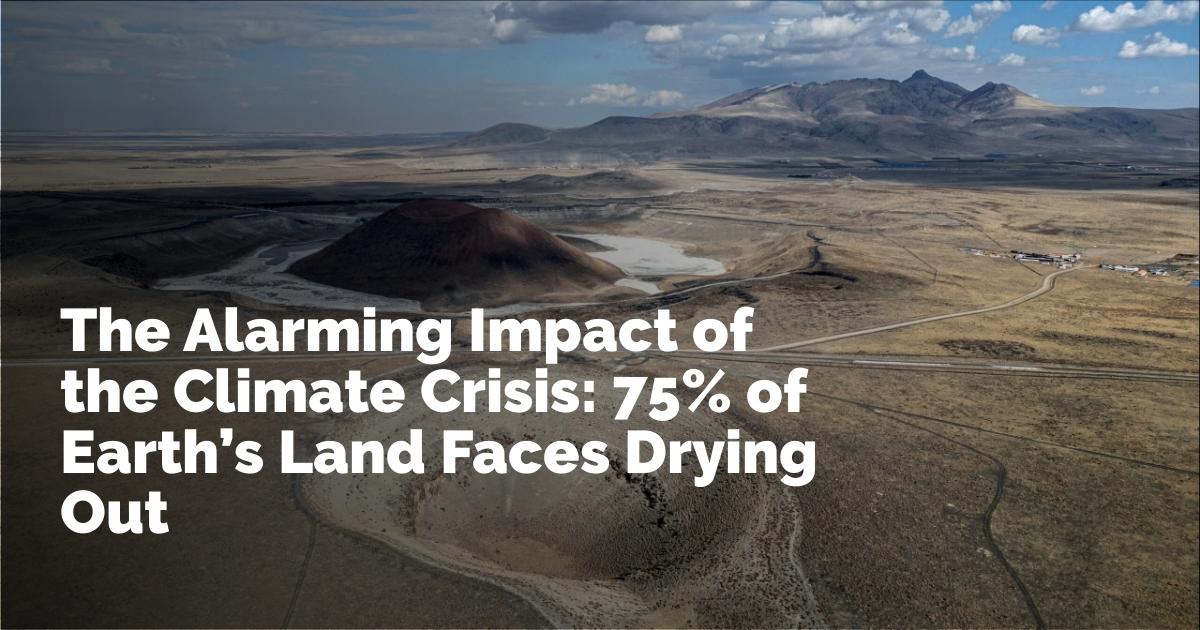Report: Climate Crisis and Its Impact on Global Land and Soil
The global climate crisis is having a profound and far-reaching impact on terrestrial environments and soil health worldwide. New research reveals that climate change is causing significant changes in the world’s land, turning vast areas into arid zones with increasingly saline soils. This transformation threatens agricultural productivity, biodiversity, and the health of global ecosystems, placing billions of people at risk of hunger, displacement, and economic instability.
The Extent of Land Aridification
Over the past three decades, climate change has accelerated the drying of the Earth’s land. According to a report by the United Nations Convention to Combat Desertification (UNCCD), 77 percent of the world’s land has become drier, with more than 40 percent now classified as drylands—areas where water is scarce. This shift is not limited to traditionally arid regions but is increasingly affecting diverse geographies, including parts of the Midwest, central Mexico, and the Mediterranean.
These drylands, excluding Antarctica, cover an area larger than Canada and are home to about 30 percent of the global population. If emissions continue unabated, this proportion could more than double by the end of the century, significantly altering global land use and availability.
The Rise of Soil Salinity
Alongside aridification, there is a growing concern over soil salinity. The Food and Agriculture Organization (FAO) reports that about 10 percent of the world’s soils are affected by excessive salt, with an additional 2.5 billion acres at risk. High soil salinity impairs plant growth by reducing their ability to absorb moisture and altering soil structure, leading to erosion and diminished fertility. For staple crops such as rice and beans, yield losses may reach as high as 70 percent, exacerbating food insecurity in the most affected regions.
Economic and Societal Implications
The expansion of drylands and salt-affected soils presents a significant challenge to global food production. Already, climate change has contributed to a situation where one in eleven people worldwide face hunger. If current trends continue, staple crops like soybeans, wheat, and rice could see significant declines in production, particularly in regions vulnerable to aridity such as sub-Saharan Africa. Sub-Saharan Africa could potentially lose up to 22 percent of its current crop production capacity by 2050.
These changes not only threaten agricultural economies but also have wider impacts, including loss of GDP, large-scale migration, increased health issues, and mortality rates. They are contributors to intensified wildfires, sandstorms, and dust storms while promoting environmental erosion and degradation.
Global Response and Future Outlook
In light of these alarming trends, the UNCCD COP16 summit in Riyadh underscored the need for urgent global action to address land degradation, desertification, and drought. Despite pledges of over $12 billion to tackle these challenges across 80 vulnerable countries, there was no consensus on a legally binding protocol for action.
Various nature-based and technological solutions have been proposed to mitigate these impacts. Strategies include improving crop and water management, developing water-efficient and salt-resistant crops, and investing in agroecological practices. However, there are debates about the effectiveness of large-scale initiatives like the Great Green Wall, which aims to combat desertification in Africa but has faced criticism for potentially worsening water scarcity and biodiversity loss.
Closing Reflection
While the challenges posed by climate-induced aridification and soil salinity are daunting, they are not insurmountable. Governments worldwide must prioritize resilience and adaptation efforts to manage these shifts effectively. The UNCCD and FAO reports serve as a clarion call to action, urging immediate implementation of adaptive strategies in response to this burgeoning crisis.
Given the scientific consensus on these issues, it is imperative that the global community acknowledges the severity of these impacts and acts decisively to ensure a sustainable future for the planet’s inhabitants and ecosystems. The complexity and scale of the problem demand coordinated, ambitious actions that go beyond temporary solutions, focusing on a comprehensive, integrated approach to land management and climate adaptation.
출처 : Original Source

